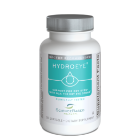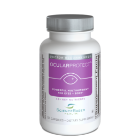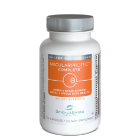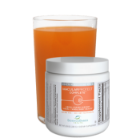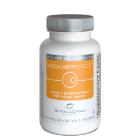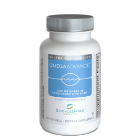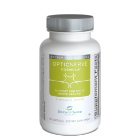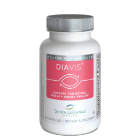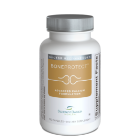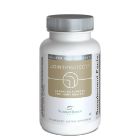FREE SHIPPING with Auto-Delivery & SAVINGS UP TO 20% with a Package Plan >>
FREE SHIPPING & SAVINGS UP TO 20% >>
Nutrition and Genetics: Vitamin E May Help Some Diabetics
There's a growing interest in nutrigenomics - the study of how different foods may interact with specific genes to modify the risk of chronic diseases. The underlying premise is that the influence of diet on health is related to individuals' genetic or phenotypic make-up. The aim is to identify the bioactive molecules in the diet that affect health by altering gene expression. As with any emerging field, there are knowledge gaps to close and questions about whether testing and targeted nutrition therapy will be cost effective public health strategies. However knowledge is increasing.
For example, researchers are identifying genotypes that appear to put meat consumers more at risk for colorectal cancer, and finding genetic variations that may increase susceptibility to osteoporosis and require early intervention with calcium and other nutrients. We've also learned that a common polymorphism of one gene is linked to elevated homocysteine levels and increased risk of heart disease when folic acid intake is low (3,4).
Predicting Who Can Benefit from Vitamin E
Researchers from Israel's Institute of Technology are pursuing another line of inquiry. It's known that people vary in their phenotype of haptoglobin (Hp), a blood protein that attaches to free hemoglobin and is used clinically to assess the rate of red blood cells destruction. Hp is also an antioxidant protein that prevents hemoglobin-induced tissue oxidation. The Hp gene locus is polymorphic, and people can inherit one of 3 different haptoglobin types referred to as Hp 1:1, Hp 2:1 and Hp 2:2. These inherited variations appear to influence response to antioxidant therapy.
The Israeli team tested this hypothesis in the Women's Angiographic Vitamin and Estrogen Trial (WAVE), a prospective study that evaluated the effects of vitamins C and E with or without hormone replacement therapy in treating atherosclerosis in post-menopausal women - a study that failed to find any benefit in taking antioxidants. In analyzing data from this trial, the Israeli researchers found significant benefit of the vitamins in slowing coronary artery stenoses, but only in women with a certain haptoglobin type.
Vitamin E May Benefit Haptoglobin 2:2 Diabetics
Hp 2:2 is a very poor antioxidant compared to other Hp types, and Hp 2:2 appears to be predictive of heart disease in diabetics who tend to generate more free radicals. About 40% of diabetics are estimated to have the Hp 2:2 form. In the newest study, the team analyzed serum samples from the Heart Outcomes Prevention Evaluation (HOPE) trial, another trial that showed no benefit for 400 IU vitamin E supplementation on cardiovascular risk in all patients. When analyzed by Hp type, those diabetics with Hp 2:2 who took vitamin E had an apparent 43% reduction in risk of heart attack.
Large Scale Trial Underway
According to the researchers at Technion, a large-scale, 5-year study of some 2000 diabetics with Hp 2:2 is being conducted. If this larger study confirms the results seen so far, vitamin E might represent a way to reduce the risk of CVD and heart attack in a significant proportion of diabetics. It may also help explain the disparity in results from antioxidant trials in recent years.
Other research teams have reported links between Hp 2:2 and refractory hypertension, risk of gestational diabetes and other disorders. If further research corroborates the predictive value of haptoglobin type, it may be a useful tool to identifying those who can benefit from targeted nutrition strategies.
References
- Murtaugh MA et al. The CYP1A1 genotype may alter the association of meat consumption pattersn and preparation with the risk of colorectal cancer in men and women. J Nutr 135:179-186, 2005.
- Napoli N et al. Effect of CYP1A1 Gene Polymorphisms on Estrogen Metabolism and Bone Density. J Bone Miner Res. 20(2):232-9, 2005.
- Jacques PF et al. Relation between folate status, a common mutation in methylenetetrahydrofolate reductase, and plasma homocysteine concentrations. Circulation.93:7-9, 1996.
- Klerk M et al. MTHFR 677C3T polymorphism and risk of coronary heart disease: a meta-analysis. JAMA.288:2023-2031, 2002.
- Levy AP et al. The effect of vitamin therapy on the progression of coronary artery atherosclerosis varies by haptoglobin type in postmenopausal women. Diabetes Care 27:925-930, 2004.
- Levy AP et al. The effect of vitamin E supplementation on cardiovascular risk in diabetic individuals with different haptoglobin phenotypes. Diabetes Care 27:2767, 2004
- Sadrzadeh SM et al. Haptoglobin phenotypes in health and disorders. Review. Am J Clin Pathol.121 Suppl:S97-104, 2004.

